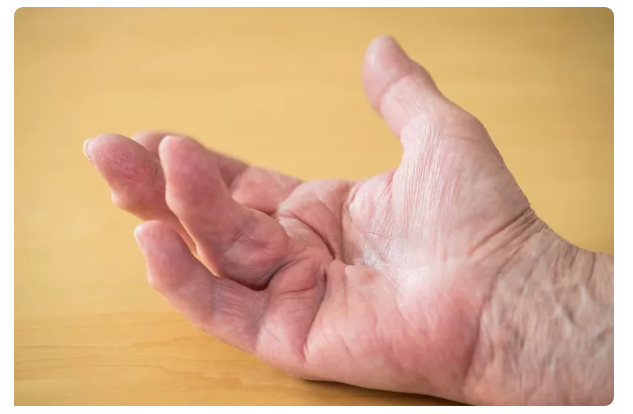Introduction: What is Dupuytren’s Contracture?
Dupuytren’s Contracture, commonly referred to as Loguytren Problems, is a chronic hand condition in which the tissue under the skin of the palm thickens and tightens. This leads to one or more fingers — usually the ring and little finger — bending inward toward the palm. Over time, this flexion becomes permanent and affects the hand’s ability to function normally.
Named after the French surgeon Baron Guillaume Dupuytren, this disease may not be life-threatening, but it deeply affects daily tasks like holding objects, shaking hands, or placing your hand flat on a surface. Understanding its causes, symptoms, and treatment options is essential for early intervention and maintaining hand mobility.
Causes and Risk Factors of Loguytren Problems
The exact cause of Dupuytren’s Contracture remains unknown, but several risk factors increase the likelihood of developing it:
- Genetics: It often runs in families, especially those with Northern European ancestry, which is why it’s sometimes called “Viking Disease.”
- Age and Gender: More common in men over 50. Women may also be affected but usually experience milder symptoms.
- Lifestyle Habits: Smoking and heavy alcohol consumption can negatively affect blood flow and connective tissue health.
- Medical Conditions: People with diabetes or epilepsy are at a higher risk, especially those using long-term anti-seizure medications.
- Occupational Factors: While repetitive hand use or manual labor may contribute, this link isn’t strongly proven.
Signs and Symptoms: How to Identify Dupuytren’s Contracture
This condition typically progresses slowly and painlessly. Early signs include:
- Small lumps or nodules in the palm
- Stiffness or tightness in the fingers
- Difficulty laying the hand flat on a surface (tabletop test)
- Visible cords of tissue pulling the fingers inward
- Contractures that limit hand use and flexibility
As it worsens, fingers—especially the ring and pinky—can become locked in a bent position, making everyday tasks difficult. In some cases, the disease can also affect the soles of the feet (Ledderhose disease) or knuckle pads (Garrod’s pads).
How is Dupuytren’s Contracture Diagnosed?
Diagnosis is primarily clinical. A hand specialist will:
- Examine the palm for nodules and cords
- Conduct the tabletop test — asking the patient to lay their hand flat on a surface
- Measure finger mobility and range of motion
Imaging like ultrasound or MRI is rarely needed but may be used for complicated cases.
Non-Surgical Treatment Options
For mild to moderate cases, non-invasive treatments can help manage symptoms:
- Needle Aponeurotomy (NA): A needle is used to break the tissue cords.
- Collagenase Injections (Xiaflex): An enzyme injection dissolves the fibrous tissue.
- Radiation Therapy: Helps slow progression in early stages.
- Splinting and Physical Therapy: Helps maintain finger flexibility, though it won’t reverse the contracture.
These treatments are especially beneficial for those looking to avoid surgery and recover quickly.
Surgical Options for Advanced Cases
In severe or recurrent cases, surgery may be required:
- Open Fasciectomy: The most common procedure to remove the affected tissue.
- Dermofasciectomy: Removes both the diseased tissue and some overlying skin.
- Joint Fusion or Amputation: Considered only when the affected finger is no longer functional.
Surgery can be effective, but it carries risks such as infection, nerve damage, or recurrence. Post-operative physical therapy is usually required.
Alternative and Emerging Therapies
Research is ongoing into new and alternative treatments:
- Shockwave Therapy: Being studied for softening fibrous tissue.
- Stem Cell Therapy: Potential for future regenerative treatment.
- Natural Remedies: Massage, stretching exercises, and vitamin E are sometimes used, though they lack scientific proof.
Always consult with a healthcare provider before trying any alternative method.
Prevention and Long-Term Management
While there’s no guaranteed way to prevent Dupuytren’s Contracture, some lifestyle choices may reduce risk:
- Avoid smoking and alcohol
- Manage diabetes and other chronic illnesses
- Protect your hands from repeated trauma
- Begin treatment early when symptoms first appear
Regular hand exercises and splinting may slow progression, especially when started early.
Conclusion: Living with Dupuytren’s Contracture
Living with Dupuytren’s Contracture (Loguytren Problems) can be challenging, but it’s manageable with the right care. Whether through non-surgical methods like enzyme injections or more advanced surgical options, there are effective ways to regain hand function.
Early diagnosis, lifestyle changes, and regular monitoring are key. If you or someone you know is experiencing symptoms, consult a hand specialist to develop a personalized treatment plan. With the right approach, most people can continue to live active, fulfilling lives despite this condition.
Read More From https://latestmagazine.co.uk/

